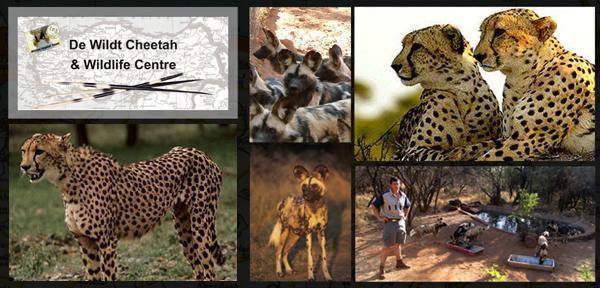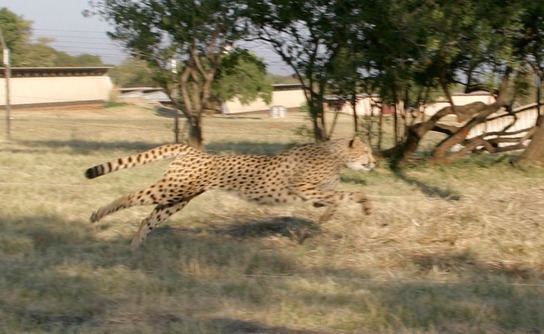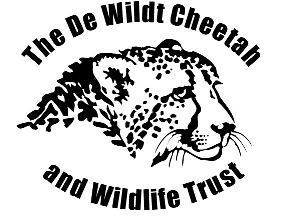 | ||
Similar Ann van Dyk Cheetah, Hartbeespoort Dam, Bush Babies Monkey S, Hartbeespoort Aerial Cableway, The Elephant Sanctuar | ||
De wildt cheetah and wildlife centre africa travel chanel
The De Wildt Cheetah and Wildlife Centre, also known as Ann van Dyk Cheetah Centre is a captive breeding facility for South African cheetahs and other animals that is situated in the foothills of the Magaliesberg mountain range (near Brits and the Hartbeespoort Dam) in the North West Province of South Africa.
Contents
- De wildt cheetah and wildlife centre africa travel chanel
- History
- Other breeding programmes
- Notable achievements
- References

History

The centre is situated on what was originally Van Dyk's parent's chicken farm, which they acquired in 1950. Due to her compassionate nature, Ann soon had a collection of stray and injured animals on the farm. Then, in October 1968, a local farmer offered her two cheetah cubs, which she accepted.

However, the cubs had been acquired without the necessary permits and, when they enquired about obtaining these permits, the cubs were confiscated and sent to the National Zoological Gardens of South Africa in Pretoria.
Meanwhile, the Zoo had already established a successful captive breeding programme, but further expansion was limited due to the lack of land available in its urban setting. Consequently, they had been considering acquiring a more rural breeding site.

Ann and her eldest brother, Godfrey, thus offered to the Zoo management the use of their facilities for captive breeding programmes. This offer was accepted and the centre officially opened on 16 April 1971.
Ann van Dyk received the gold medal
Other breeding programmes

Subsequent to its cheetah breeding programme, the centre also established successful breeding programmes for several other rare and endangered species, including:
Notable achievements
The centre first achieved international recognition for bringing the cheetah back from the brink of extinction - it was largely due to the centre that the cheetah was removed from the endangered species list of the South African Red Data Book for Terrestrial Mammals in 1986. Its success can be seen from the fact that, since its inception, over 600 cheetah cubs have been born at the centre, which is a dramatic increase from the period when the total cheetah population of South Africa was estimated at only 700. In 2009, it was estimated that 800 cheetah cubs have been bred so far.
In addition to its cheetah breeding success, the centre has also had other notable successes:
Between 1975 and 2005, 242 litters were born with a total of 785 cubs. In a study done by Bertschinger, H. J., Meltzer, D. J. A., & Van Dyk, A. (2008), the survival rate of cubs was examined. “Mean cub survival from 1 to 12 months and greater than 12 months of age was 71.3 and 66.2%, respectively.” This study shows that cheetahs can be bred successfully and that their endangerment can be decreased through these breeding programs.
